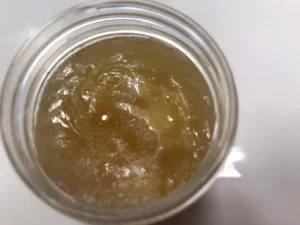What is Residue Wax or Foots Oil
Residue wax, often found as a by-product in the petroleum industry, is a versatile substance with a range of applications. Unlike refined waxes, it contains a higher oil content, giving it unique properties that make it suitable for various industrial uses. As you explore this article, you’ll gain a deeper understanding of what residue wax is and how it stands out in the world of waxes.
Characteristics of Residue Wax
- Oil Content: The oil content in residue wax is significant. It affects the wax’s texture and application methods. The oil content varies between 30 and 40%.
- Melting Point: Residue wax has a specific melting point range between 40-50 degrees Celsius, which is crucial in determining its suitability for different applications.
- Flash Point: Understanding the flash point is important for handling and safety measures, especially in industrial environments. The flash point of this material is 230-250 degrees Celsius.
- Kinematic Viscosity at 100◦C: The viscosity at 100 degrees Celsius indicates how the wax behaves under heat, impacting its use in various products. This value for this material type is 6-7.5 CST.
- Penetration at 25◦C: This characteristic measures the softness or hardness of the wax at room temperature, influencing how it is applied. The penetration level is 100-150 or 1/10mm.
- Color: The color of foots oil can range from light to dark, affecting its aesthetic applications and indicating its purity.
Production Process of Residue Wax
The production of residue wax involves a series of steps. Starting from crude oil, it goes through processes like distillation and refinement. Each step is crucial in defining the quality and characteristics of the final product. You can check below to learn the details of this process:
Crude Oil Distillation: It all starts with the distillation of crude oil. In this initial step, crude oil is heated and separated into various components, based on their boiling points. Lighter components are extracted first, followed by heavier ones.
Extraction of Slack Wax: One of the by-products of the distillation process is slack wax. This semi-refined wax contains a mix of oil and wax, and it serves as the primary raw material for producing Foots Oil.
De-Oiling of Slack Wax: The next step involves de-oiling the slack wax. This is achieved through a process called solvent extraction, where a solvent is used to dissolve the oils and separate them from the wax. This step is crucial to increase the wax content and reduce the oil content.
Refining the Wax: After de-oiling, the wax undergoes further refining. This involves processes like bleaching and filtration to remove impurities and improve the quality of the wax. We improve the color and odor of the wax during this phase.
Cooling and Solidification: The refined wax is then cooled in a controlled environment. This cooling process allows the wax to solidify into the desired form. The cooling rate can affect the texture and consistency of the final product.
Applications of Residue Wax in Different Industries
- Candles: Residue wax for candles is a hidden gem, providing consistency and burn quality.
- Cosmetics: Residue wax in cosmetics helps moisturize properties making it a favored ingredient in lotions and balms.
- Industrial Foots Oil Uses: From lubricants to protective coatings, residue wax plays a crucial role in industrial applications.
- Textiles: The benefits of Foots Oil in textiles include enhancing fabric finishes and durability.
- Automotive Care: Foots Oil finds a niche in the automotive industry, particularly in car waxes for that perfect shine.


